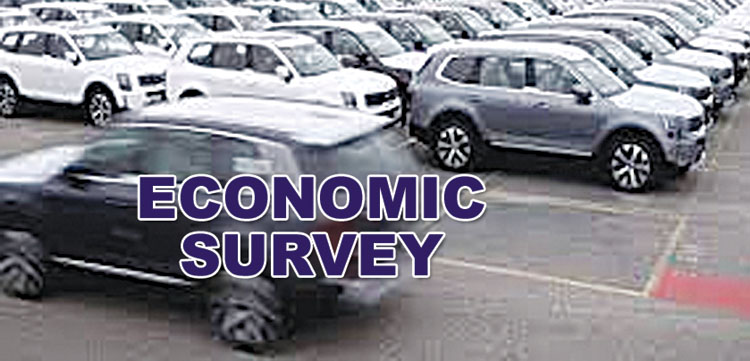Mumbai, Jan 31 (FN Bureau) Terming infrastructure sector as the backbone for any economy, the Economic Survey on Monday said the extent and quality of infrastructure determines the ability of the country to utilise its comparative advantage and enables cost competitiveness. The Survey tabled by Finance Minister Nirmala Sitharaman, ahead of the Union Budget, said that given the strong backward and forward linkages and the positive externalities that infrastructure generates, it can be a vehicle for social and economic transformation. It said that in order to achieve five trillion dollars GDP by FY2025, India needs to spend about USD 1.4 trillion over this period on infrastructure. During financial years 2008-17, India invested nearly 1.1 trillion dollars on infrastructure. Stating that India is ranked second among developing countries both by the number of PPP projects as well as the associated investments, the Survey said that public private partnership in infrastructure has been an important source of investment in the sector. “The Public Private Partnership Appraisal Committee (PPPAC), which is responsible for the appraisal of PPP projects, has cleared 66 projects with a total project cost of Rs 137218 crore from 2014-15 to 2020-21,” it said.
The Survey highlighted that the National Infrastructure Pipeline, which was launched with 6,835 projects, has been expanded to over 9,000 projects covering 34 infrastructure sub-sectors. According to the Survey, during the fiscals 2020 to 2025, sectors such as energy (24 per cent), roads (19 per cent), urban (16 per cent), and railways (13 per cent) amount to around 70 per cent of the projected capital expenditure in infrastructure in India. “NIP has involved all the stakeholders for a coordinated approach to infrastructure creation in India to boost short-term as well as the potential GDP growth,” it said. The Survey highlighted that under the Viability Gap Funding (VGF) scheme, which was launched for providing financial assistance to financially unviable but socially/ economically desirable PPP projects, a total VGF amount disbursed between 2014-15 to 2020-21 by DEA is Rs 2943 crore. “The revamped VFG scheme is expected to attract more PPP projects and facilitate private investment in social sectors such as health, education, waste water, solid waste management, water supply etc.,” it said. On the National Monetisation Pipeline, the Survey said that a robust asset pipeline has been prepared to provide a comprehensive view to investors and developers of the investment avenues in infrastructure.
“The pipeline includes selection of de-risked and brownfield assets with stable revenue generation profile (or long rights) which will make for an attractive investment option. Total indicative value of NMP for core assets of the Central Government has been estimated at Rs six lakh crore over 4-year period (5.4 per cent of total infrastructure investment envisaged under NIP),” the Survey said. Under the NMP, the private sector entity is expected to operate and maintain the asset based on the terms of the contract/concession, generating returns through higher operating efficiencies and enhanced user experience. “Funds, so received by the public authority, are reinvested in new infrastructure, or deployed for other public purposes,” it said. On the road segment, the Survey said that there has been a consistent increase in the construction of National Highways/roads since 2013-14 with 13,327 km of roads constructed in 2020-21 as compared to 10,237 km in 2019-20, indicating an increase of 30.2 per cent over the previous year.
In 2021-22 (till September), 3,824 km of road network were constructed. Also, the extent of road construction per day increased substantially in 2020-21 to 36.5 km per day from 28 km per day in 2019-20, a rise by 30.4 per cent as compared to the previous year. “The significant upturn in road construction in 2020-21 is due to the increase in public expenditure by 29.5 per cent as compared to the previous year- a reflection of the impetus given by the Government of India to a critical sector that generates employment and supports infrastructure during a pandemic year,” the Survey said. The Survey further stated that in addition to action taken to increase the network of national highways, the government has taken measures to address village level road networks through the Gram Sadak Yojana.

